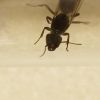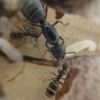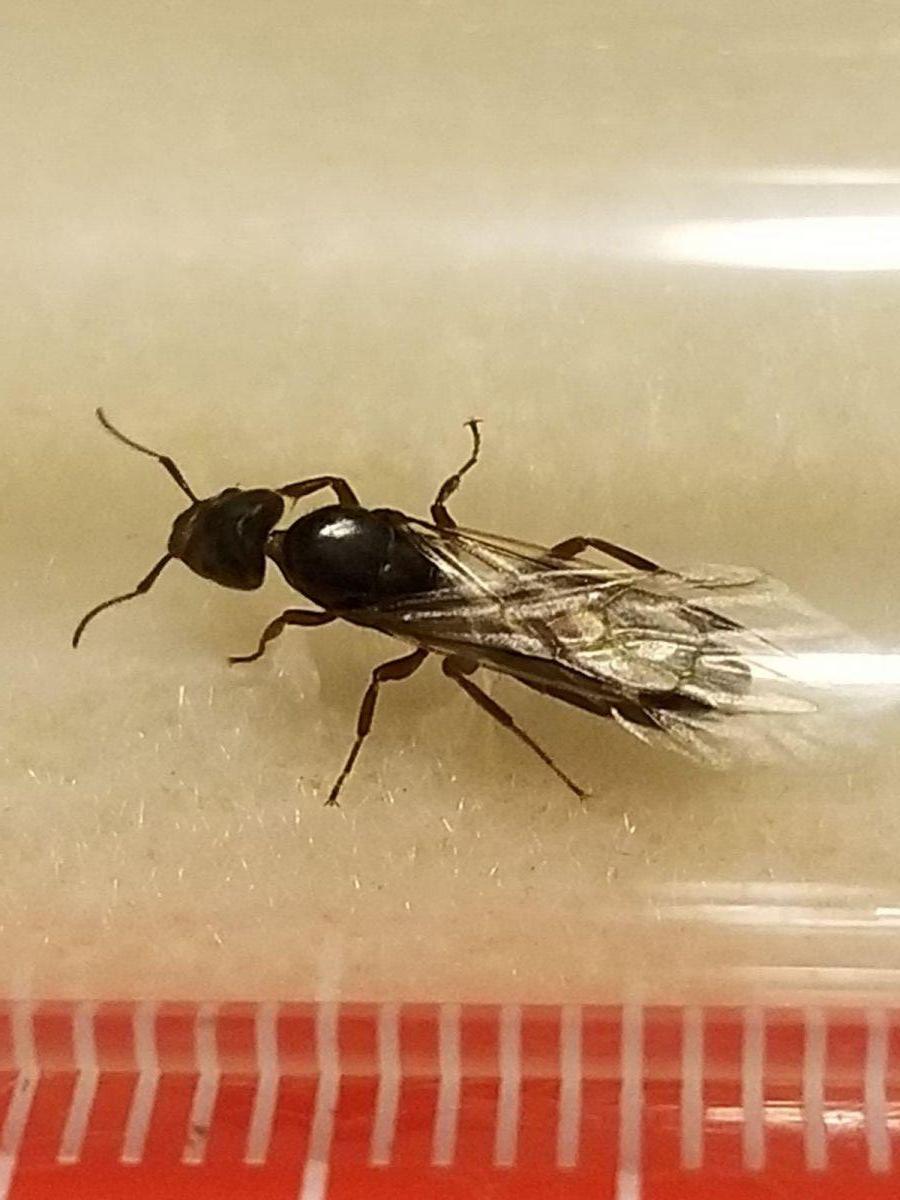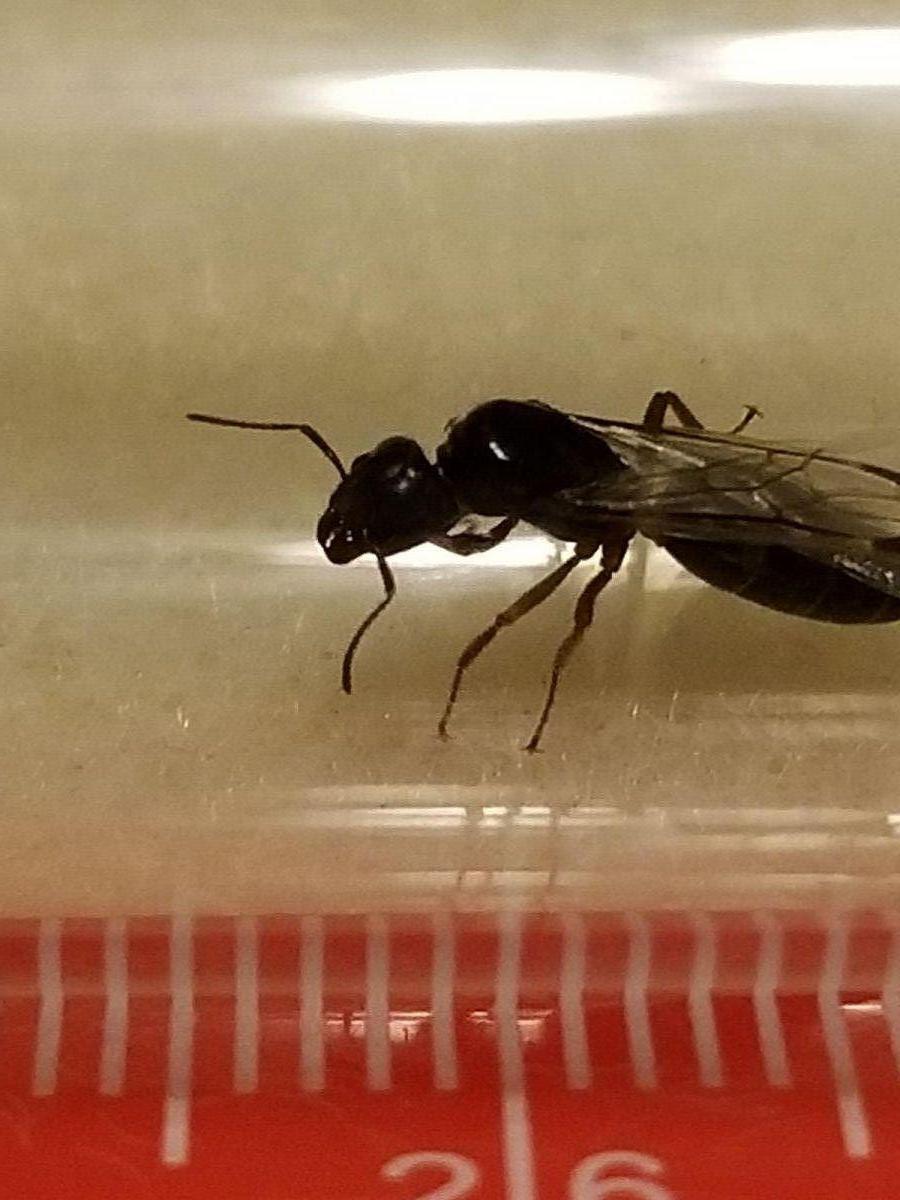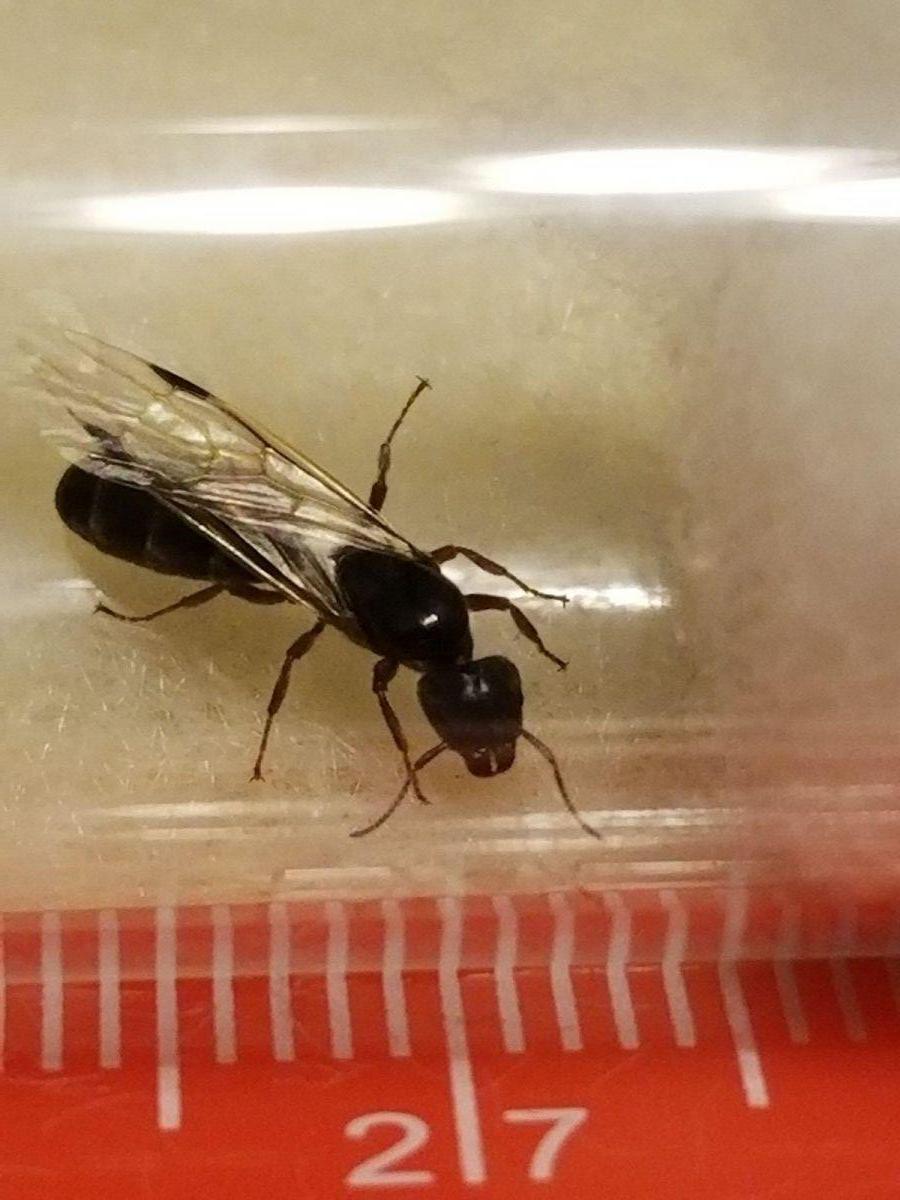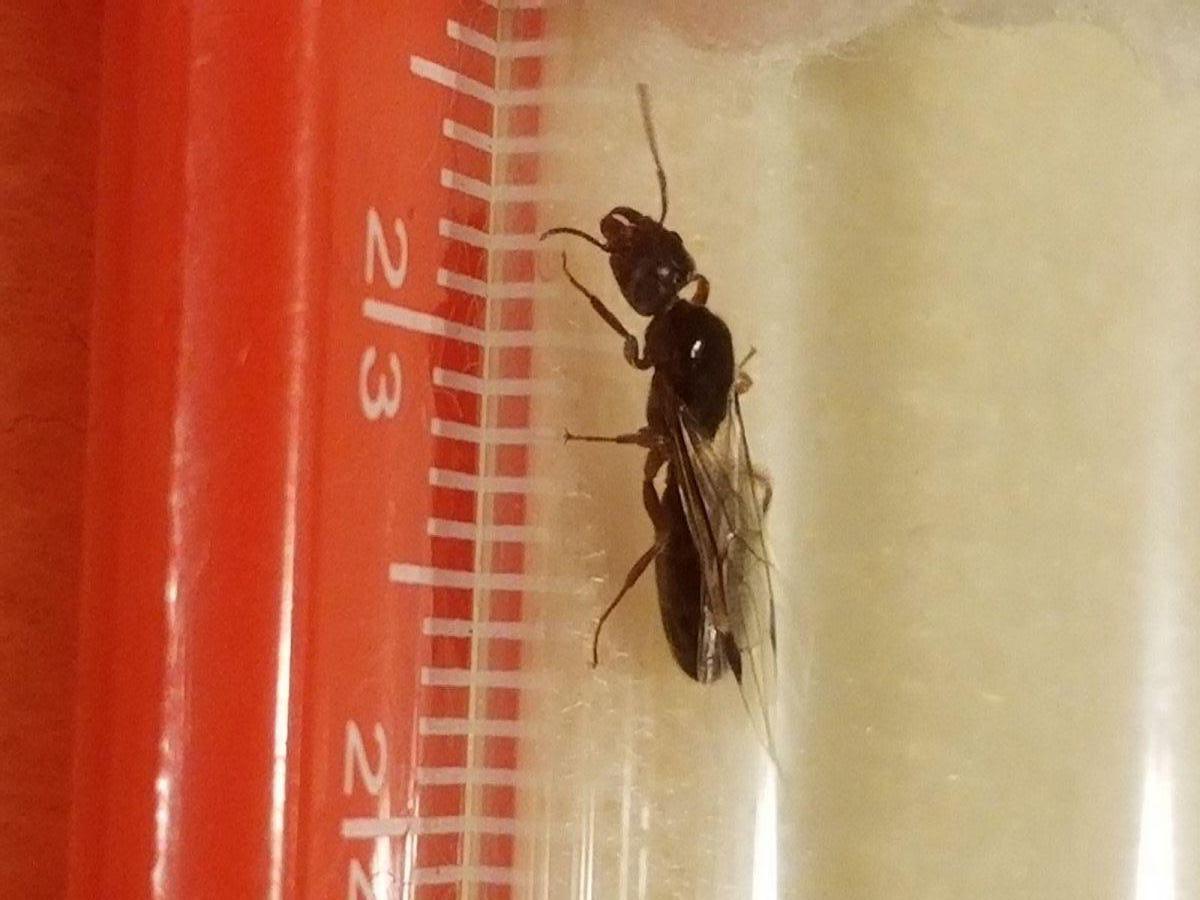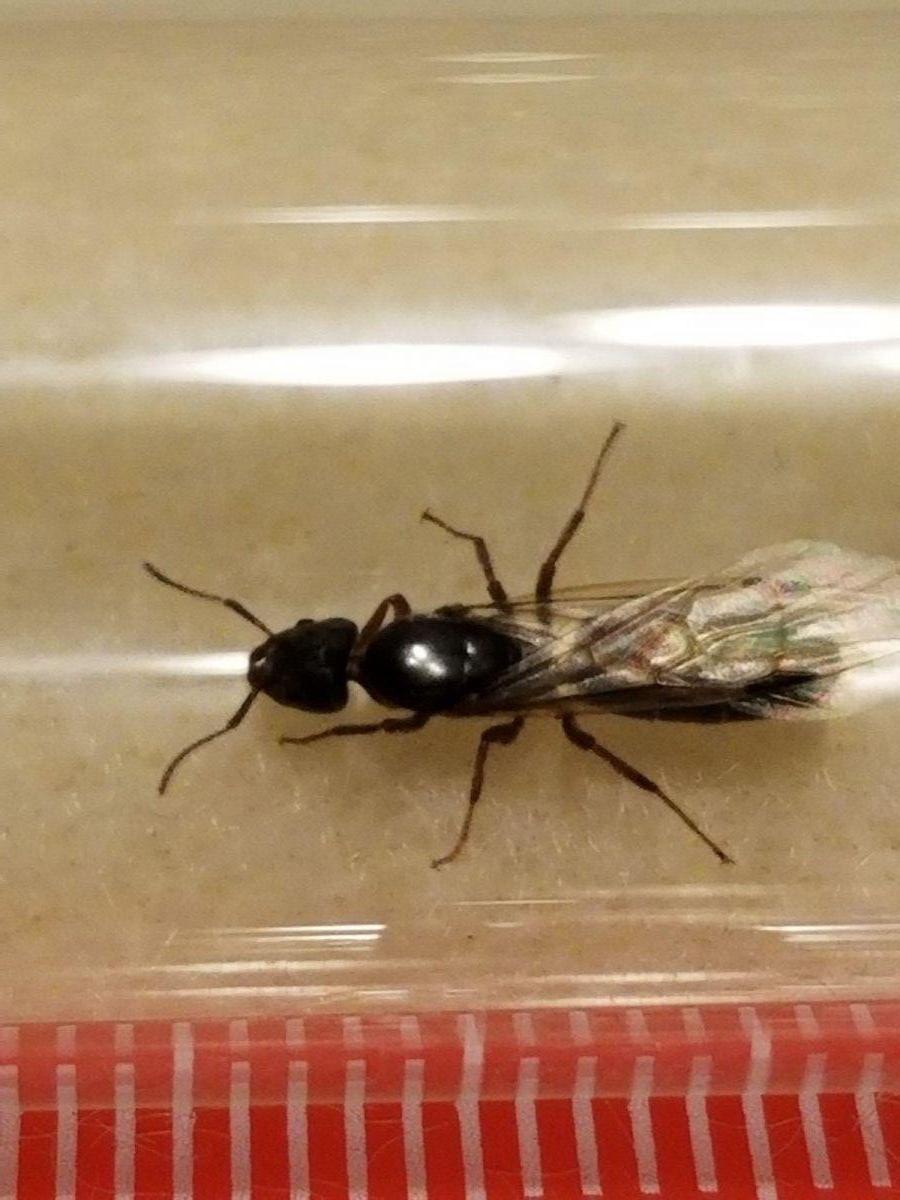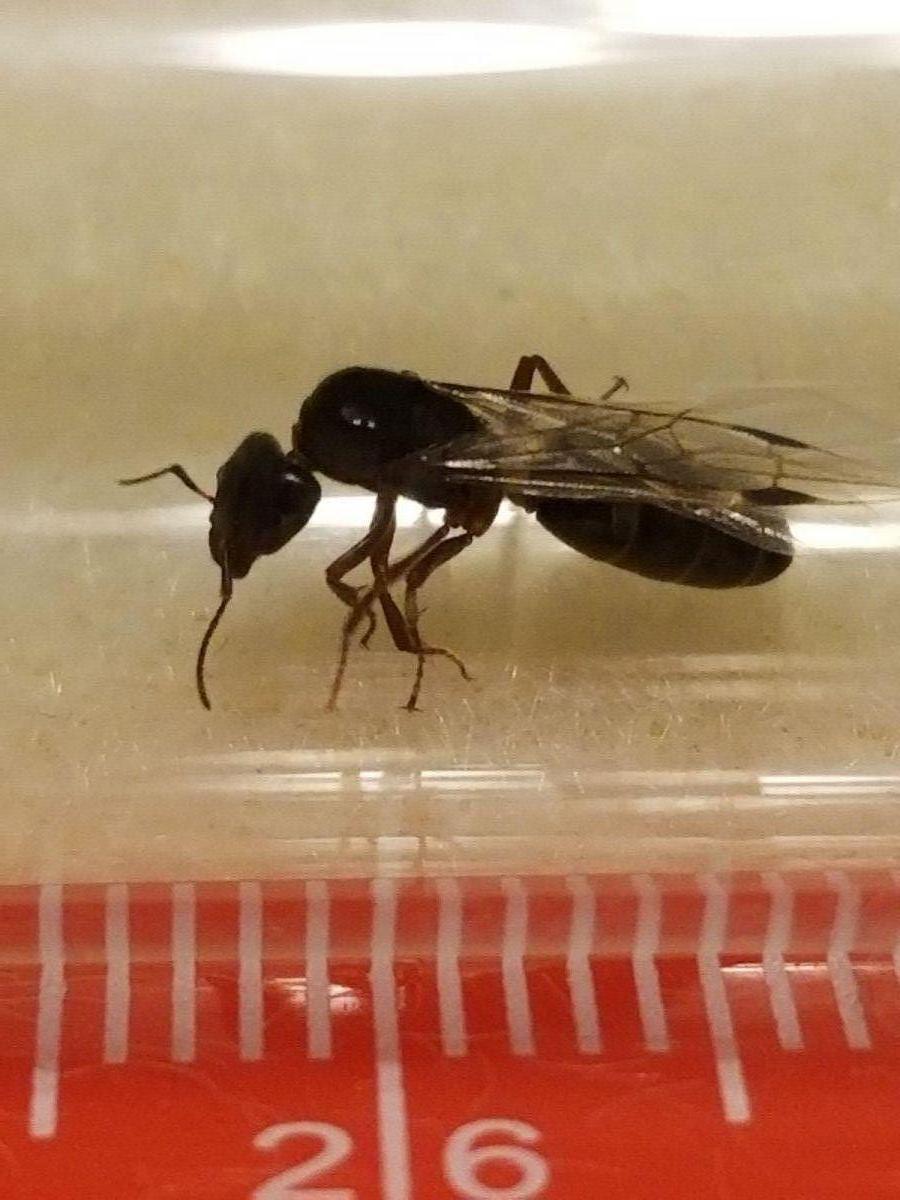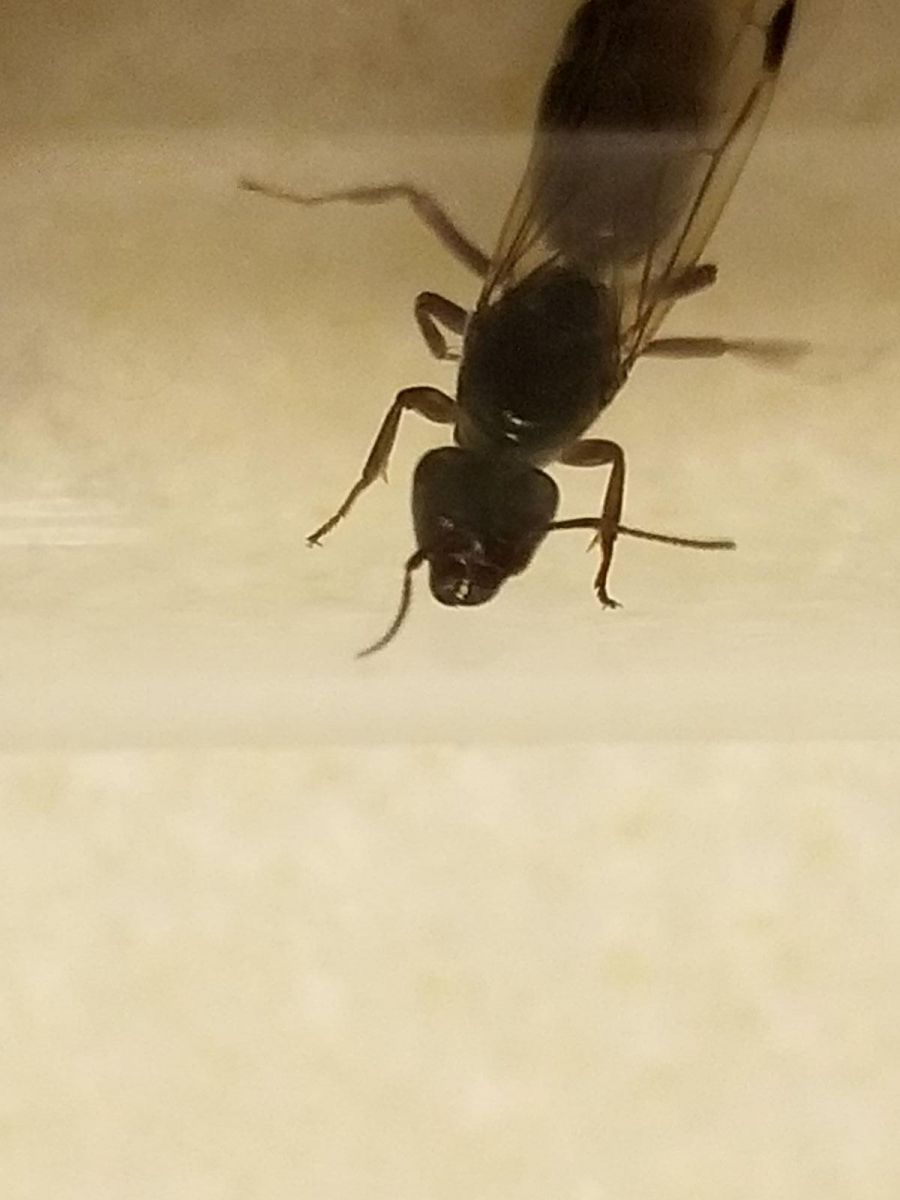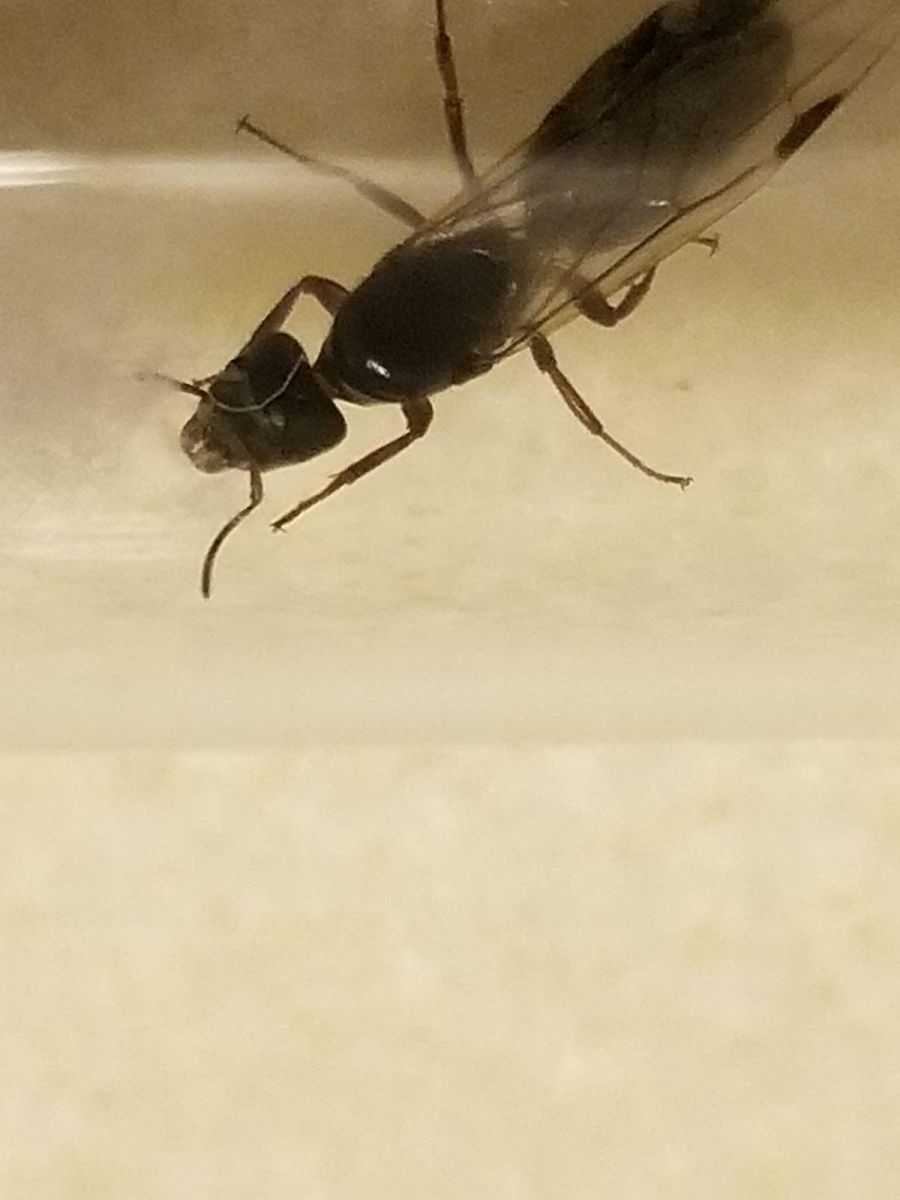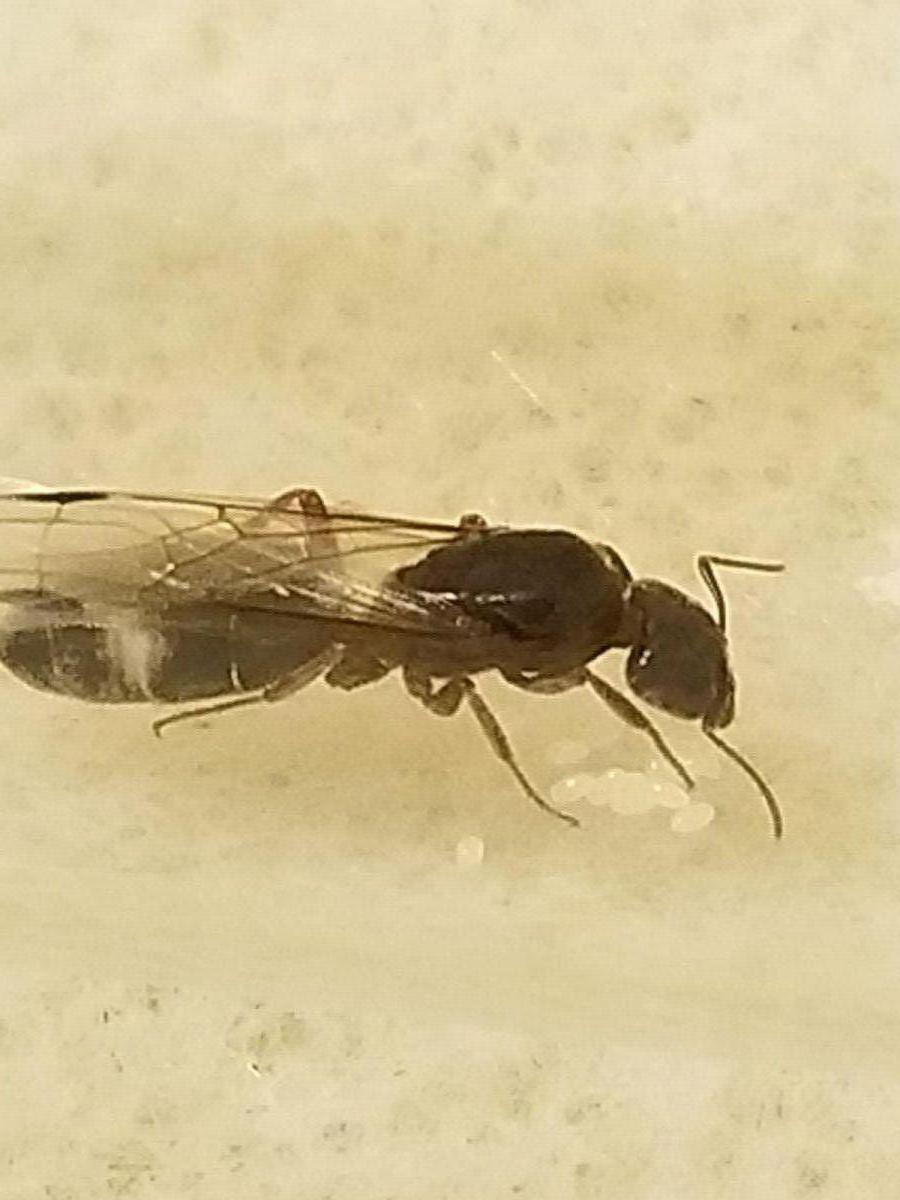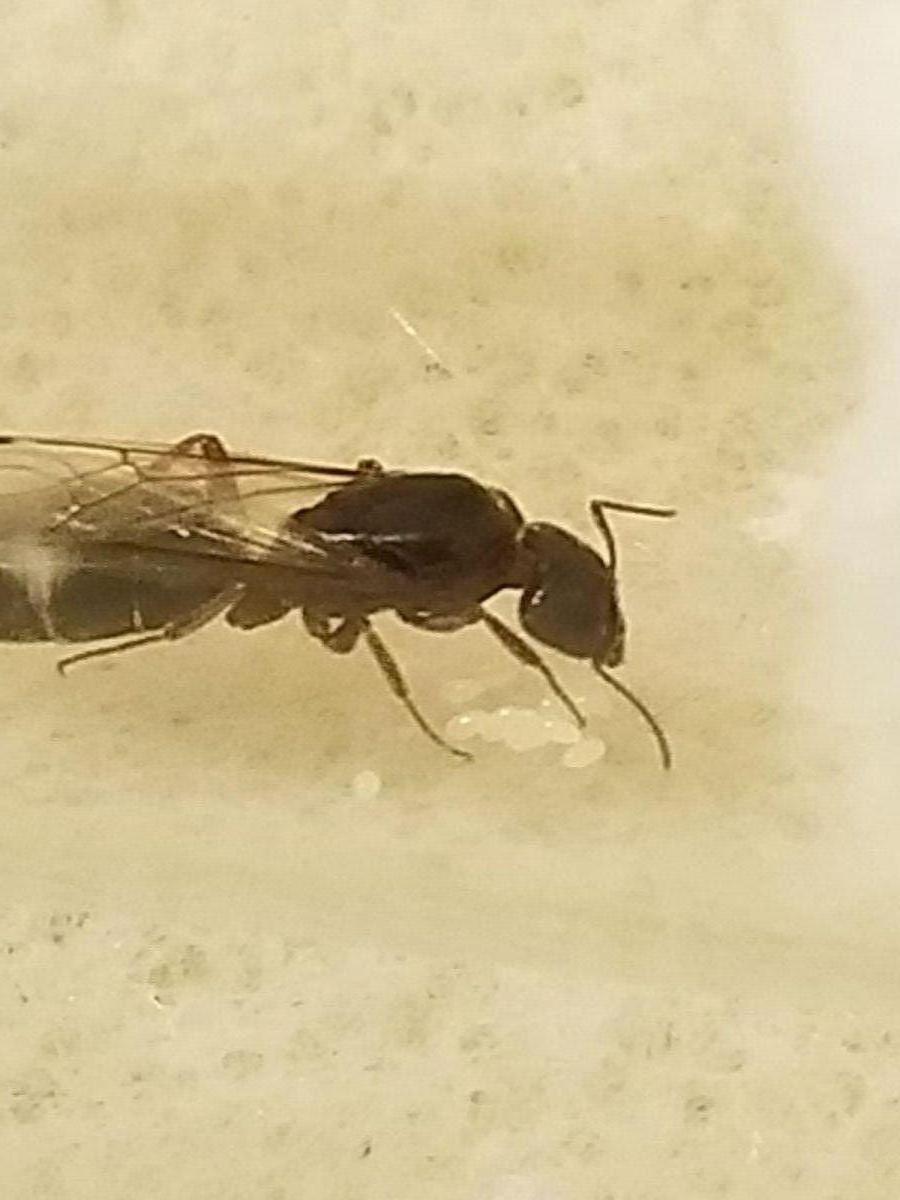Hello everyone! It's been a while since I logged on, but I had this little beauty fall into my lap! Well, crawl around my kitchen ceiling, at least. Anyway, on to the important stuff.
Found just outside Lindsay, CA, 5/29/18.
It was indeed, in my kitchen, but the San Joaquin Valley is quite rural and agrarian, with the majority of the farmland around me being devoted to orange groves.
I'm unsure of the length, but I can tell you that she's almost 3/4 of and inch, as that's the diameter of the test tubes I use. So, between 15-18 mm, ballpark.
Colour appears to be a uniform black, but I could be wrong. I'm not sure if it's gloss or matte, but I'm erring on the side of gloss.
As for characteristics and behavior, I was unprepared and fairly quick to get her in a drawer, so I didn't notice much. However, she was pretty quick to calm down once I got her in the test tube.






